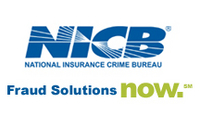Hot Wheels: Vehicle Theft in Third Year of Decline
 |
Even So, Every 26.4 Seconds a Vehicle is Stolen in the U.S.
DES PLAINES, IL - October 8, 2007: Hot Wheels, the National Insurance Crime Bureau's companion study to its annual Hot Spots auto theft report examines data reported to the National Crime Information Center (NCIC) and determines the vehicle make, model, and model year most reported stolen in 2006. See the full report at http://www.nicb.org/.
For 2006, the most stolen vehicles* in the nation were:
1. 1995 Honda Civic
2. 1991 Honda Accord
3. 1989 Toyota Camry
4. 1997 Ford F-150 Series Pickup
5. 2005 Dodge Ram Pickup
6. 1994 Chevrolet C/K 1500 Pickup
7. 1994 Nissan Sentra
8. 1994 Dodge Caravan
9. 1994 Saturn SL
10. 1990 Acura Integra
In 2006, 1,192,809 motor vehicles were reported stolen which is 42,417 fewer than in 2005. Using the FBI's average valuation of $6,649 per stolen vehicle, this amounts to over $7.9 billion in losses in 2006 -- just in vehicle value alone.
"The decrease in vehicle thefts is certainly welcome news to law enforcement, the insurance industry and vehicle owners nationwide," said Robert M. Bryant, NICB's President and Chief Executive Officer. "At NICB, we have been providing the latest technology in auto theft detection and recovery equipment to law enforcement agencies from California to Florida. Through the support of our member insurance companies, NICB acquires and deploys License Plate Recognition systems and bait vehicles in an effort to reduce vehicle theft."
Although overall thefts are down for the third consecutive year, only 59% of stolen vehicles were recovered last year -- the lowest recovery rate in over a decade. Thus, the question becomes, what happens to the over 700,000 vehicles still outstanding? The short answer is that they fuel a number of related insurance fraud and vehicle theft activities. For example:
Exports: NICB Agents have recovered a significant number of stolen vehicles from foreign countries. It is not unusual for stolen vehicles to be shipped intact to other countries where prospective buyers can have them for a fraction of what they would legitimately cost and with no questions asked.
Whether enclosed in shipping containers at coastal ports or simply driven across the border into Canada, Mexico, or Central and South America, exports contribute to the tens of thousands of stolen vehicles which are never recovered.
NICB's Foreign Operations group actively pursues the repatriation of stolen vehicles in foreign countries and works closely with U.S. embassy personnel and foreign government officials to return those vehicles. In 2006, over 4,000 vehicles with a value of nearly $42 million were returned to the U.S. from Belize, Costa Rica, El Salvador, Dominican Republic, Guatemala, Honduras, Jamaica, Lithuania, Mexico, Nicaragua and Italy.
Owner Give-Ups: An owner give-up is the term that describes a vehicle that has been reported stolen by its owner when the owner is actually making a false theft report. In these situations, vehicles are driven into ponds, lakes, or quarries, set on fire in sparsely populated areas, or even driven into Mexico and abandoned with their owners filing "theft" reports later.
Owner give-ups are often motivated by economic factors. If a person owes more on a vehicle than it is worth, having it stolen allows the owner to walk away from the debt. Similarly, on a lease where the usage has exceeded the terms of the lease, a staged theft becomes an option.
Chop Shops: A good percentage of stolen vehicles end up in chop shops. These are places that disassemble stolen vehicles and sell their parts to individuals, dealers, body shops -- just about anyone who has a need but lacks scruples. Thieves can sell the individual parts from older models for more money than the vehicle is worth intact.
A Layered Approach to Protection: To protect their investment, vehicle owners are urged to follow NICB's "layered approach" to auto theft prevention by employing simple, low-cost suggestions to make their vehicles less attractive to thieves. NICB's four layers of protection are:
Common Sense: The cheapest form of defense is to simply employ the anti-theft devices that are standard on all vehicles: locks. Lock your car and take your keys.
Warning Device: Having and using a visible or audible warning device is another item that can ensure that your car remains where you left it.
Immobilizing Device: "Kill" switches, fuel cut-offs, and smart keys are among the devices which are high and low tech, but extremely effective. Generally speaking, if your car won't start, it won't get stolen.
Tracking Device: If your vehicle is stolen, these systems help law enforcement track and recover it quickly. Some systems will even inform you if your vehicle has been moved without your knowledge.
You can do your part in helping to stop this criminal activity by reporting fraud and vehicle theft to NICB at 1-800-TEL-NICB (1-800-835-6422). Your call can be anonymous and you could be eligible for a reward. Or you may report fraud and theft by visiting our Web site www.nicb.org.
The National Insurance Crime Bureau is the nation's leading not-for-profit organization dedicated exclusively to preventing, detecting and defeating insurance fraud and vehicle theft through information analysis, investigations, training and public awareness.
* This report reflects only stolen vehicle data reported to NCIC in 2006. No further filtering of information is conducted, i.e., determining the total number of a particular make and model currently registered in the U.S. for comparison purposes.


